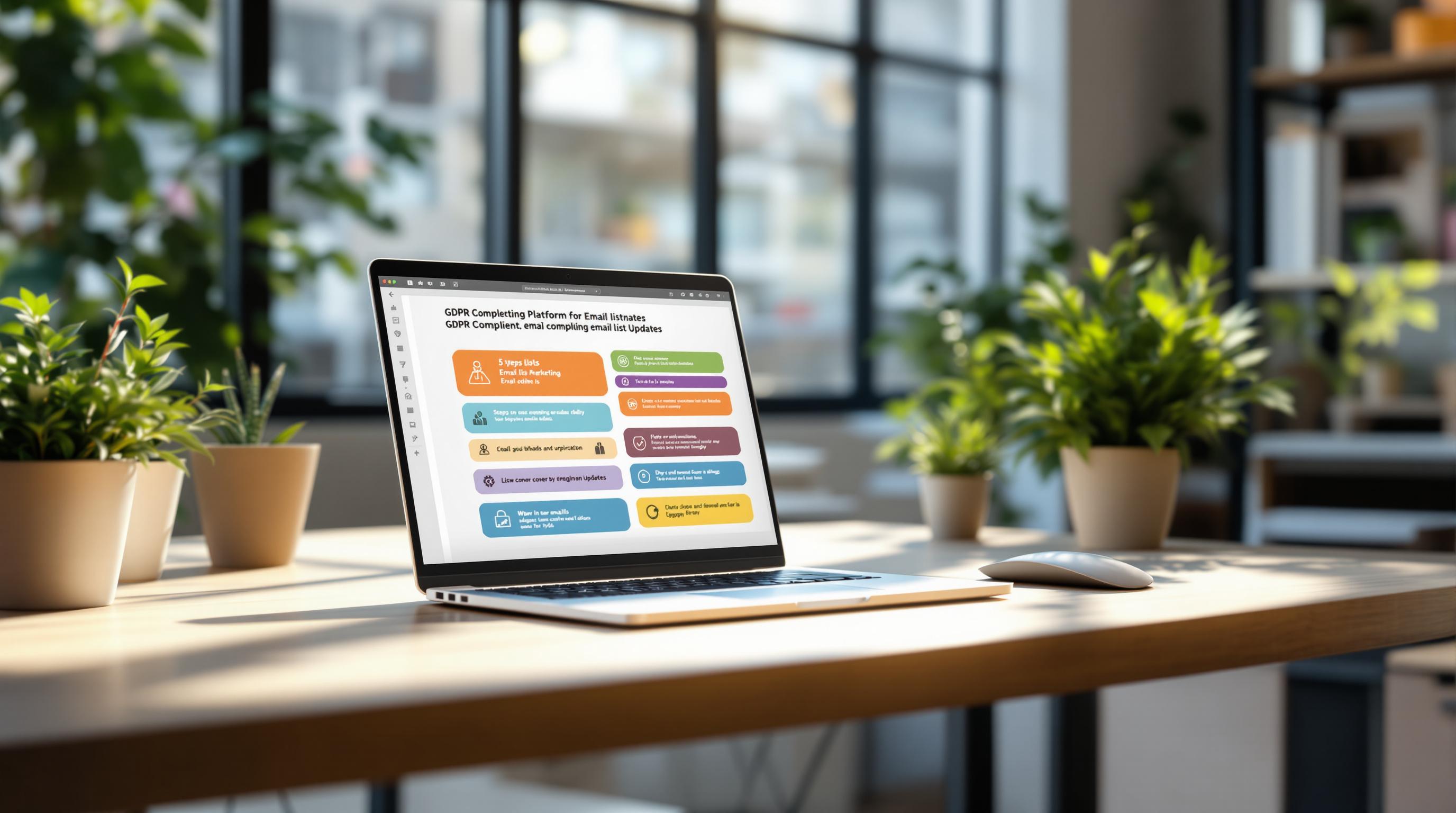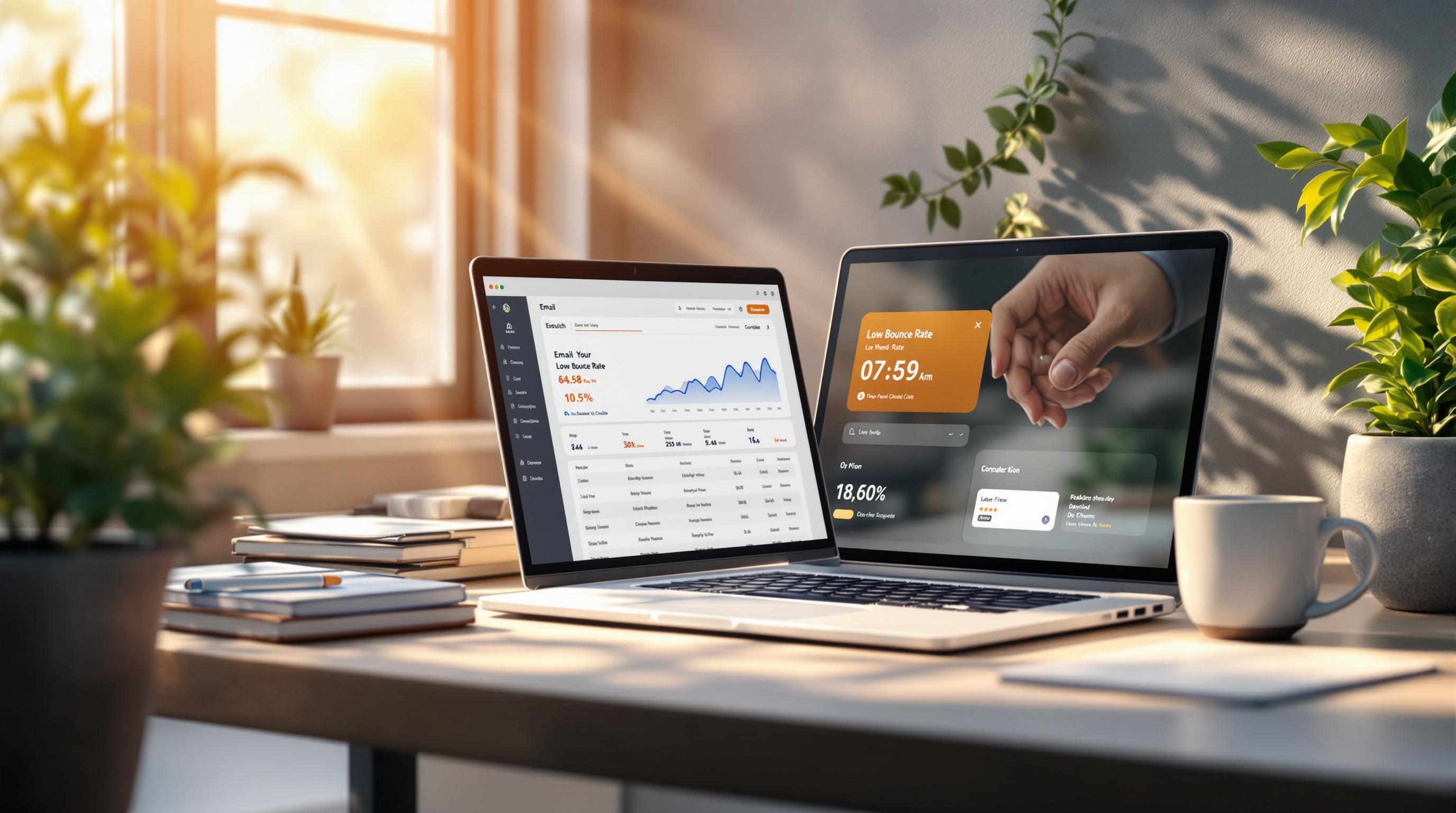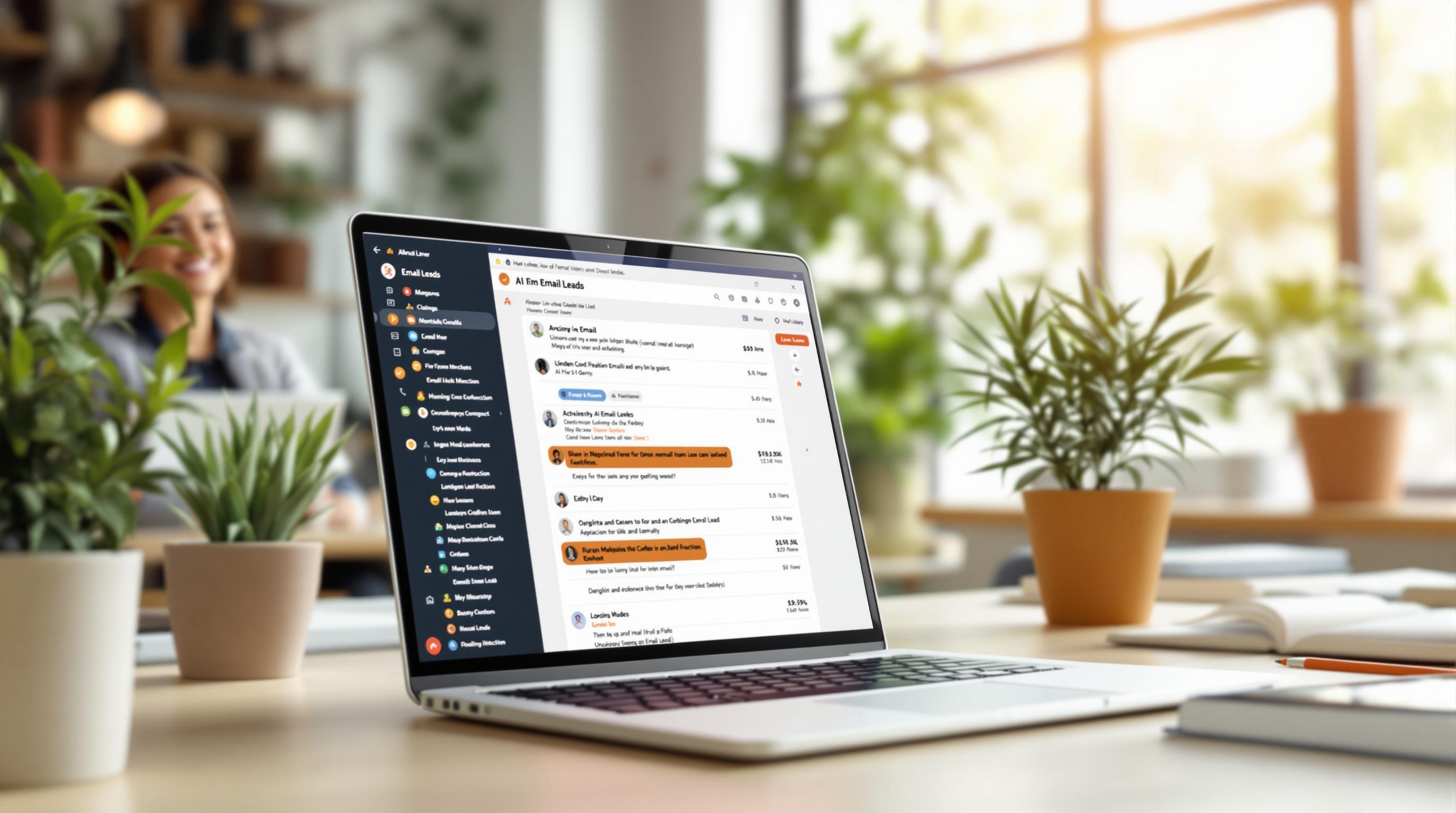Looking to boost your lead generation? Here's a quick breakdown of email scraping and manual lead generation:
Email Scraping:
- Automated process using software
- Can collect thousands of leads quickly
- Less personalized
- Requires upfront investment in tools
Manual Lead Generation:
- Personal outreach and networking
- Slower but often higher quality leads
- More personalized interactions
- Time-intensive but builds stronger relationships
Quick Comparison:
| Factor | Email Scraping | Manual Lead Generation |
|---|---|---|
| Speed | Fast (1,000,000+ emails/month) | Slow (5-20 leads/day) |
| Cost | Upfront tool costs | Ongoing time and labor costs |
| Quality | Variable, may include junk | Usually higher |
| Personalization | Limited | High |
Many businesses use both methods: scraping for quantity, manual for quality. Your choice depends on your company size, resources, and goals.
Remember: Good lead generation isn't just about numbers. It's about building relationships and trust with potential customers.
Related video from YouTube
What Are Lead Generation Methods?
Lead generation is crucial for business growth. Let's look at two popular methods: email scraping and manual lead generation.
Email Scraping vs Manual Lead Generation Basics
Email scraping is like using a digital fishing net. It's an automated process that uses software to gather email addresses and contact info from online sources. It's a digital detective that scours websites, social media, and online directories for potential leads.
Manual lead generation is more like traditional fishing. It involves personal outreach, networking, and relationship-building to find and connect with potential leads. This method relies on human effort and interaction.
Key Differences: Automated vs Manual Methods
The main difference? Scale and personal touch.
Email scraping is about quantity. It can collect thousands of leads quickly. For example, Email Extractor Tool can grab up to 1,000,000 email IDs per month on its Enterprise plan. That's a lot of potential leads.
Manual lead generation is slower but often results in higher quality leads. It allows for more personalized interactions and better targeting. This method works well in B2B settings where deals are often high-value and complex.
Current Lead Generation Methods
In 2023, businesses are getting creative with lead generation. Here's what's hot:
- Content Marketing: Companies use valuable content to attract leads. HubSpot's research shows 93% of B2B businesses think content marketing generates more leads than traditional strategies.
- AI-Powered Tools: AI is changing the game. Tools like Email Extractor Tool use AI to find and validate email addresses automatically.
- Social Media Mining: LinkedIn has become a goldmine for B2B lead generation. Companies use advanced search features and engagement strategies to find potential clients.
- Personalized Email Campaigns: With 72% of U.S. adults preferring email communication with brands, personalized email outreach is still powerful.
- Webinars and Virtual Events: These online gatherings are popular for generating leads, especially post-pandemic.
The key to success? Balance automation and personalization. Email scraping can give you a big pool of potential leads, but the human touch in manual methods often seals the deal. Smart businesses use both: automated tools to cast a wide net, then manual techniques to nurture the best leads.
How Email Scraping Works
Email scraping is like fishing for leads with a digital net. It's an automated process that uses special tools to gather email addresses from various online sources. Let's break it down.
Tools for Email Scraping
You need the right gear to start email scraping:
- Browser extensions
- Standalone applications
- Cloud-based services
The Email Extractor Tool stands out. It's an AI-powered Chrome extension that can grab thousands of email addresses in minutes. Here's what it offers:
| Plan | Price/Month | Emails/Month | Key Features |
|---|---|---|---|
| Starter | $8.99 | 5,000 | Automation, CSV download |
| Growth | $39.99 | 50,000 | Priority support |
| Enterprise | $139.99 | 1,000,000 | Premium support |
AI's Role in Email Scraping
AI is the secret sauce that makes modern email scraping so effective. It helps by:
1. Spotting email addresses in hidden or unusual formats
2. Processing massive amounts of data quickly
3. Reducing the chances of picking up invalid or fake email addresses
The Email Extractor Tool, for example, uses AI to automatically detect and extract emails from web pages. It's way faster than old-school methods.
Getting Started with Email Scraping
Want to try email scraping? Here's what you need:
1. A reliable scraping tool that fits your needs and budget
2. A list of target websites to scrape
3. A way to store the emails you collect
4. Knowledge of legal and ethical guidelines
Just remember: email scraping is powerful, but use it wisely. Always respect website terms of service and privacy policies.
"Email scraping has become an essential tool for businesses seeking to expand their customer base, improve engagement, and drive revenue growth."
This quote nails why so many businesses are jumping on the email scraping bandwagon. It's a quick way to build your lead list. But don't forget - quality matters as much as quantity. That's where verifying and using your scraped emails comes into play.
Manual Lead Generation Steps
Manual lead generation is like crafting connections by hand. It's personal and can lead to high-quality prospects and strong relationships. Here's how it works:
Common Manual Methods
Networking and direct outreach are the core of manual lead generation. They put you in direct contact with potential clients.
Networking is about building relationships at industry events, conferences, or local business meetups. The SaaStr conference, for example, is a hotspot for B2B SaaS companies looking to connect.
Direct outreach means reaching out to potential leads yourself. This could be through personalized emails, phone calls, or LinkedIn messages. It's all about making that first contact and starting a conversation.
Research and Checking Leads
Before you reach out, you need to know your audience. That's where research comes in.
Start by creating an Ideal Customer Profile (ICP). This helps you focus on leads most likely to convert. Consider:
- Industry
- Company size
- Location
- Challenges
- Budget
Once you have your ICP, dig deeper. Use LinkedIn, company websites, and industry databases to learn more about potential leads.
"An accurate ICP plays a pivotal role in finding high-value leads faster."
This quote highlights why thorough research matters. The more you know about potential leads, the better you can engage with them.
Building Business Connections
The real magic happens when you start building connections. This is where the human touch shines.
Attending trade shows and networking events is a solid strategy. These give you chances to meet potential clients face-to-face and start building trust.
Anaïs Bishop from La Growth Machine says:
"Choosing manual prospecting also means creating a genuine relationship with the prospect."
This personal approach can lead to stronger, longer-lasting business relationships. It helps you understand both the emotional and rational sides of B2B prospects, focusing on their worries, concerns, and frustrations.
Keep in mind, B2B sales often have a longer, more complex buying cycle. Building a strong connection can help you navigate this process more effectively.
Manual lead generation takes more time and effort than automated methods. But the quality of leads and depth of relationships it can produce often make it worth it. It's not just about getting contact info – it's about understanding the customer's journey and providing value every step of the way.
sbb-itb-8abf799
Comparing Both Methods
Let's look at email scraping vs. manual lead generation. Each has its pros and cons.
What to Compare
We'll break it down by key factors:
Speed and Efficiency
Email scraping tools are fast. Email Extractor Tool's Enterprise plan can grab up to 1,000,000 email IDs monthly. Manual methods? Much slower. You might get a handful of leads per day.
Cost-Effectiveness
Email scraping needs upfront cash but can save money long-term. Manual methods? They keep costing you time and people.
Accuracy and Quality
Manual often wins here. Anaïs Bishop from La Growth Machine says:
Choosing manual prospecting also means creating a genuine relationship with the prospect.
That personal touch can mean better leads.
Scalability
Email scraping scales up easily. Manual methods? They hit a human limit.
Personalization
Manual lead gen lets you get personal. Email scraping? Not so much, unless you work at it.
Side-by-Side Comparison
Here's how they stack up:
| Factor | Email Scraping | Manual Lead Generation |
|---|---|---|
| Speed | Super fast (1,000,000+ emails/month possible) | Slow (Maybe 5-20 leads/day) |
| Cost | Upfront tool costs, cheaper long-term | Ongoing time and people costs |
| Accuracy | Can be good with AI, but might get junk | Usually good, humans check |
| Scalability | Easy to scale up | Limited by people power |
| Personalization | Takes extra work | Built-in |
| Data Freshness | Can get real-time data | Might get old fast |
| Legal Stuff | Watch out for data laws | Fewer legal headaches |
Many businesses use both. They might scrape emails for a big list, then manually check the best leads.
The Visitor Queue team nails it:
The effectiveness of manual vs automated lead generation ultimately depends on your business.
Think about what you need, what you can spend, and who you're trying to reach.
What to Consider Before Choosing
Picking the right lead generation method isn't simple. Let's look at the key factors to consider when deciding between email scraping and manual lead generation.
Company Size and Needs
Your company's size and needs are crucial in this decision.
Small businesses often benefit from manual lead generation. It allows for personal interactions, which can be key when building a brand. Sarah Roberts, a makeup artist and founder of A Beauty Edit, uses this approach. She offers a 20% discount for referrals, growing her client base effectively.
Large enterprises might prefer email scraping. It's great for scaling up lead generation quickly. For example, Email Extractor Tool's Enterprise plan can gather up to 1,000,000 email IDs monthly. That's way more than manual methods could handle.
Costs and Resources
Let's break down the financial aspects of each method:
Email Scraping:
- Requires upfront investment in tools (like RocketReach's Ultimate plan at $359/month)
- Has lower ongoing labor costs
- Can offer high ROI due to scale
Manual Lead Generation:
- Has lower upfront costs
- Involves higher ongoing labor costs
- Often produces better quality leads, but at a slower pace
Tom Sullivan, a lead generation expert, says: "Make sure every marketing dollar counts. Learn fast, and iterate faster." This advice applies whether you're buying email scraping tools or hiring staff for manual outreach.
Working with Current Tools
Think about how each method fits with your existing tech setup.
Email scraping tools often integrate with popular CRMs and marketing platforms. Snov.io (starting at $39/month for the Starter plan) works with Salesforce, HubSpot, and Pipedrive.
Manual lead generation usually works well with existing CRM systems. You can enhance it with tools like LinkedIn Sales Navigator for research.
Tim Paige from LeadPages advises: "You absolutely do NOT need to try all lead generation strategies. Instead, focus on one or two that align with your business needs."
Picking the Right Method
Email scraping or manual lead generation? It's not a simple choice. Let's break it down.
How to Decide
Think about these when choosing:
Business Goals: Want lots of leads fast? Email scraping's your friend. After high-quality connections? Manual methods might work better.
Resources: Got money but not time? Email scraping tools cost upfront but save time later. Got people power? Manual methods could be your jam.
Target Audience: Selling big-ticket B2B stuff? Manual approaches might pay off. B2C business looking for scale? Email scraping could be the ticket.
Legal Stuff: Manual methods usually have fewer legal headaches than automated scraping. Know your local data privacy laws.
Mixing It Up
Why choose? Many businesses use both. Here's how:
1. Cast a Wide Net with Scraping
Use email scraping to build a big list. The Email Extractor Tool can grab up to 1,000,000 email IDs monthly on its Enterprise plan. That's a lot of potential leads.
2. Human Touch for Quality
Have your team sift through the scraped leads. People are great at spotting the good ones.
3. Get Personal
Use manual methods to reach out to your best leads. It's like combining a speedboat with a fishing rod - fast and precise.
Tips for Winning
Whatever you choose, keep these in mind:
- Focus on leads that matter, not just numbers.
- Keep tweaking your approach based on results.
- Follow the rules - data protection is serious business.
- If you're using scraping tools, make sure your team knows how to use them well.
- Even with automation, try to make your outreach feel personal.
Conclusion
Email scraping and manual lead generation both have their place in today's business world. Let's break it down:
Email scraping is all about speed and numbers. Tools like Email Extractor Tool can grab up to 1,000,000 email IDs in a month. That's why businesses hungry for quick growth love it.
Manual lead generation? It's slower, but it's great for building real relationships. Anaïs Bishop from La Growth Machine says it helps create genuine connections with prospects.
Here's the thing: You don't have to pick just one. Many smart businesses use both. They might use email scraping to cast a wide net, then follow up personally with the best leads.
Get this: Companies that go after lead generation see 133% higher revenues than those that don't. That's from OptiMonk, and it shows just how important good lead generation is.
So, how do you choose? Think about:
- Your business size and goals
- What resources you have
- What your target audience likes
- Legal stuff in your market
But remember: Lead generation isn't just about getting contact info. It's about building relationships and trust. The SocialSellinator Team puts it well:
"Successful lead generation is about more than just bringing in leads. It's about nurturing relationships, providing value, and building trust with your prospects."
Whatever method you choose, keep improving it. Use data to make it better. Focus on real engagement and getting a good return on your investment.
FAQs
What is manual lead generation?
Manual lead generation is the hands-on approach to finding potential customers. It's all about personal connections and direct outreach - the old-school way of drumming up business.
Here's what it typically involves:
- Networking events
- Cold calling
- Personalized emails
The big plus? It's personal. You're building real relationships with potential customers. As ExactBuyer puts it:
"Manual lead generation involves a more hands-on approach than automated lead generation."
But it's not all smooth sailing. Manual lead generation can be time-consuming and labor-intensive. You need people power to make those connections, and it takes effort to reach out one-by-one.
Pro tip: When doing manual lead generation, personalization is key. Don't just copy-paste the same message to everyone. Take the time to understand each prospect and tailor your approach. It might take longer, but the results can be worth it.



